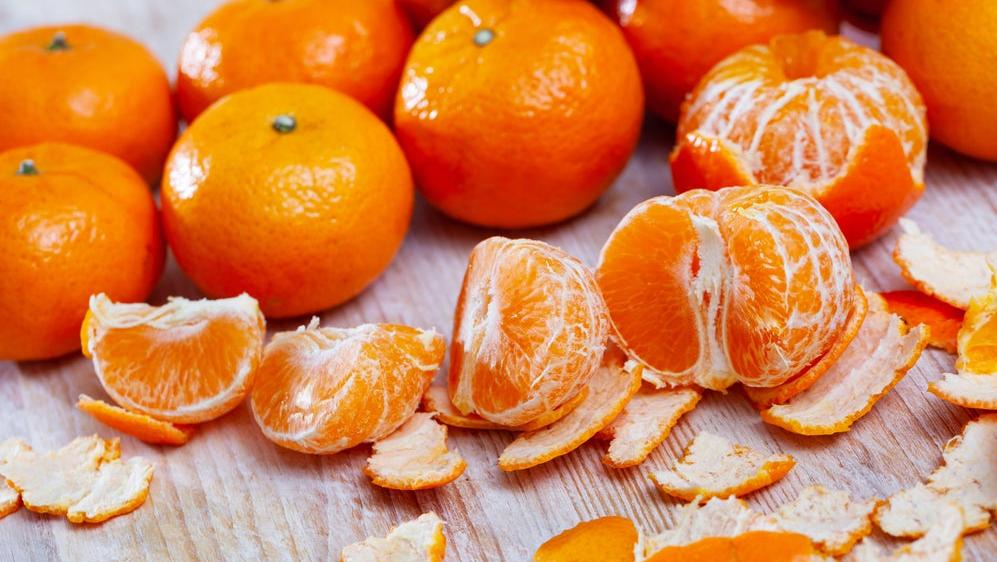How To Avoid A Bad Batch Of Tiny Oranges
Because far too often, you end up with a bag of dry, bitter little guys.
Reason my son is crying: The mandarins (or Cuties, or whatever) I bought this week are "weird." They're not the same as the "Cuties" I usually buy; they are sour, bitter, and somehow also dry. This is a common complaint of both children and adults about the various tiny oranges that frequent our lunch boxes: They're not all the same, and it's very hard to tell if you're getting a good one. Here's how to tell if you're about to peel into a jewel or a dud.
The different types of tiny oranges
The grocery store carries several varieties of tiny orange, and it's hard to know which ones have the highest success rate. I once had a lady ask me in the aisle why I picked the ones I did at Costco, and I was embarrassed to tell her I picked them because the stickers on the oranges were cuter.
Here are the types of tiny oranges you might find at the store and how you might be able to tell them apart if you forget which kind they were once you got home and threw away the bag:
- Clementines: These are the "Cuties" or "Sweeties." Seedless and super sweet. Tight, shiny skin. Usually smaller than the others.
- Tangerines: Sweeter than a regular orange, but less sweet than the others on this list. Bright orange, loose skin. Bumpier peel than a clementine. Seedless. Hardest to peel.
- Mandarins: A variety of tangerine. Have seeds sometimes (booooo). Usually the ones you'll find canned. Mild, sweet flavor.
- Satsumas: Simultaneously a tangerine and a mandarin. Seedless, with loose skin, making them easy to peel. Sweet, but easy to bruise.
There are also rare varieties that only grow in a few parts of the US/world, as well as some smaller "regular" oranges that I'm not bothering with. There's also the kumquat, which is one of my favorite words but easy to differentiate from the tiny lunchtime snacks we're trying to decipher here, thanks to its more elongated shape.
How to tell if your tiny oranges are a good buy
Unless you like spitting seeds, you probably want to avoid regular mandarin oranges. If it doesn't explicitly say "seedless," I tend to avoid it. While oranges are technically a winter fruit, these lil' guys spread themselves across enough of the year that you can usually find them in most stores no matter the season.
Choose the fruits that are as orange as possible. Yellow or greenish doesn't bode well for flavor. Some experts think green citrus fruits are fine, but try telling that to my children.
If they come in a crate or bag, feel free to pick up the whole container and try to search through it, looking for uniformity of the batch. If there's any mold or big discolorations on a single piece, avoid that entire container. Mold and rot spread quickly to other nearby fruits, and there are few things grosser than reaching into a bag of oranges and finding a wet, rotten one.
While you're handling the merchandise, give a few of the tiny oranges a gentle squeeze. They should be firm, but neither hard nor mushy. I disliked writing that sentence, but this mission is very important to me, and the best way to describe a good tiny orange is "firm but a little supple." If you run your finger across its skin, you should feel a little bit of citrus oil. Thanks, I hate it.
How to tell which tiny orange to eat first
Once I get a bag of tiny oranges home, next comes the horrible choice of which one to put in the lunch box and risk the wrath of my child coming home hangry and complaining about the tiny orange being gross. Some oranges seem riper than others by feel, but it's kinda hard to tell until you open it and try a slice.
For clementines, which have tight skin, judge by squeezing and follow your gut on firmness, but be careful not to bruise the delicate creature or it's ruined (at least according to finicky eaters).
For the other varieties with looser skin, you want to be able to feel a little bit of give when you push down on the skin, but not have a lot of air in between the skin and the flesh (I'm beginning to hate the descriptors again).
Since we're still often masking in grocery stores, you maybe couldn't smell your tiny oranges in the store. At home, though, a ripe citrus fruit has a nice, identifiably citrusy scent. When you pick it up, a bitty baby orange should feel heavy for its size.
How to predict when your tiny orange will be gross
It's for sure gonna be a bad orange if:
- It has spots that are softer or spongier than others. That means it's rotting.
- It has super hard spots. That means it's drying out.
- The skin feels too tight to peel. That means it's not ripe.
- The skin feels too loose. That means it's drying out inside.
- It feels too light for its size. That means it's dried out.
It shouldn't be this hard to eat a tiny orange, but hopefully these tips allow you to find your bliss. It'll keep your tiny humans happy, or at least help them avoid scurvy.
